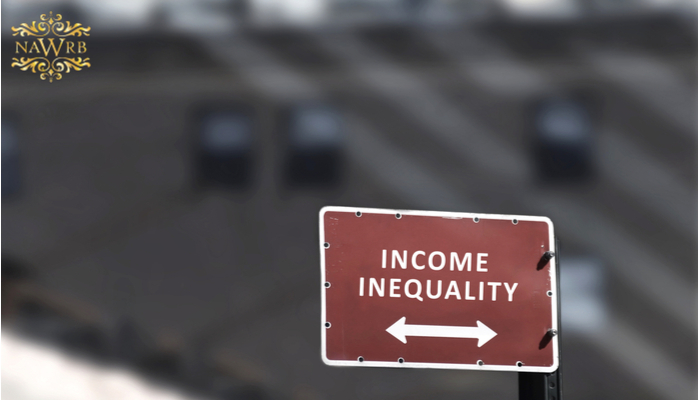The income inequality between white households and black and Hispanic households has been a historical issue in the U.S. that widened following the 2008 financial crisis. Recent Pew Research Center analysis of Federal Reserve Board data highlights this wealth gap, delving into its racial and ethnic characteristics for families at different income levels.
Pew analysis shows that for lower-income families, income inequality between white and black and Hispanic households decreased by half from 2007 to 2016:
- In 2016, lower-income white households had a net worth of $22,900, compared to $5,000 for black households and $7,900 for Hispanic households
- Following the financial crisis, the median wealth of lower-income white households decreased 49 percent by 2010, compared to median wealth losses of 3 percent for lower-income black families and 5 percent for lower-income Hispanic families
Conversely, the wealth gap among middle-income families actually increased:
- From 2007 to 2013, black households in this income tier experienced a 47 percent wealth loss, Hispanic households a 55 percent drop, and white households a 31 percent loss
- In the middle-income tier, from 2007 to 2013, the white-to-black wealth ratio rose from three-to-one to four-to-one; the white-to-Hispanic wealth ratio grew from two-to-one to three-to-one
Pew Research Center Findings
- The 2016 median American household wealth of $97,300 remains significantly below the 2007 figure of $139,700 (in 2016 dollars)
- In 2016, the median wealth of white households ($171,000) was 10 times higher than the median wealth of black households ($17,000) and eight times higher than that of Hispanic households ($20,600)
Homeownership plays a leading role in these income inequalities, as one of the most effective ways to build wealth. U.S. Census Bureau figures show that the current homeownership rate for non-Hispanic white alone householders is the highest among all race groups at 72.5 percent; Hispanic householders have a homeownership rate of 46.1 percent and black alone householders have the lowest rate at 42 percent.
Confirming that wealth gaps between upper-income families and lower- and middle-income families have reached the highest levels in history, Pew research exposes the troubling characteristics of the American economy, and the need to establish and support programs that help disadvantaged families access upward mobility.

 Login
Login

